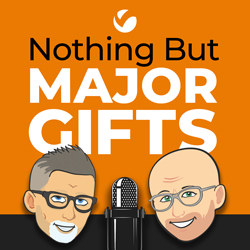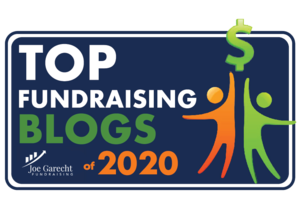Leaders, I know that it can feel like a tricky balancing act. How do you push for your fundraisers to make bigger asks without pressuring them into a transactional approach with donors?
Let’s say you just heard that a donor gave half a million dollars to the non-profit down the street. You might be thinking, “Why wasn’t that us? Why are my people not being bold enough? I don’t think they ask enough of our donors.” And because we are all human, as these thoughts grow, emotions like jealousy, fear, frustration, and anger can set in.
With that energy, you head into your next team meeting and say things like, “I looked it up and this donor has given us $50K over the last 10 years, but she just gave half a million to a non-profit in town. You need to ask her for a bigger gift this year.” You might even add, “And, we are not making big enough asks, so you all need to be asking the majority of your donors for at least $15,000.”
In your head, you’re thinking that your team needs to up their game, so you need to up the pressure. But what has this approach to pressure just created? Fear!
Your fundraisers are no longer thinking of their donors as humans, as partners, as people with passions that want to make a difference. They are now thinking of them as cash machines, and their job is to extract the most they can from those machines to make their boss happy and keep their job.
You have now guaranteed that your fundraising program will be transactional and not relational. You will potentially get in some bigger gifts in the short term as a result of this pressure, but you have also guaranteed that the potential sitting in your donor base that would have come from building authentic partnerships of trust are now squelched. Donors will not give big and boldly when treated like cash machines. Their hearts will not be inspired, they too will see their giving as a transaction, and you will continue to receive less from them. You have just guaranteed that your program will never see that half million-dollar gift that ignited your actions.
So, leaders, what could you have done differently? We have all been there. Seeing another non-profit get a significant gift, it’s natural to feel envious and frustrated that your organization was not the recipient. But take a moment to check those natural responses with some wisdom.
Choose curiosity instead and start asking questions like, “I wonder what is in the way of us getting a gift like that? Do our fundraisers have the tools, skills, and resources to make an ask this significant? What could I do to support our fundraisers so they can make bigger asks?”
You then come to the next team meeting and say, “I just heard that one of our donors gave half a million to another organization. I know she has given us $50K over the years, so I’m wondering if she has a passion and interest in our mission, and if there might be something more significant she could do here as well?” That is a very different question coming from very different energy.
Then you initiate a curious brainstorm with your team asking questions like…
- Is this person a qualified donor? Meaning, do we have a two-way relationship with them?
- What have you learned in your conversations about their passions and interest for our mission? What additional questions could we ask?
- What has our ask been in the past? Tell me more about how you landed on that number.
- If we made sure we told this donor the difference she was making in the area of her interest and asked for a bolder gift, what might that look like? What would be a reasonable amount of time to do that as a real partner?
- What are the obstacles (systems, resources, clear budget needs, etc) that stand in the way of you potentially asking her and other donors in your caseloads for a bolder gift? What can I do in those areas to make them more supportive of donor growth?
- Who knows her that might give us some helpful insight?
- What skill set development would be helpful to you all, so you feel comfortable making bigger asks?
- How can I support you in this process of seeing what might be possible?
- Let’s identify the next steps out of our plan for this donor and see what might be possible.
How do these questions shape a different response from your team?
Coming from curiosity, you just opened the door to your fundraisers making bigger asks in a relational way. You showed you understood this was a process of building a relationship over time and seeing where a donor’s passion intersects with your mission. You showed that you understood that sometimes the biggest obstacle to bigger gifts is not the fundraiser at all, but the systems and structures that you will work to improve. You’re helping them build a plan and holding them accountable to that plan, knowing that it will pivot and change over time.
If you build a culture of curiosity that embraces the idea that not every donor strategy and plan will result in a bigger gift, your fundraisers will feel safe to be bolder. You might learn that your mission isn’t a primary passion for this particular donor, and that is OK too. Why? Because this isn’t about getting every donor to give boldly. It is about finding donors with a keen passion for your mission and being a bridge between them and the need.
So, if you’re a non-profit leader, take steps now to create that safe, creative, and accountable space for your fundraisers to be bolder. You will see results far beyond that half million-dollar gift.
Karen
![Leaders, Are You Standing in the Way of Bigger Gifts? A non-profit leader drawing a box around himself [Leaders, Are You Standing in the Way of Bigger Gifts?]](https://veritusgroup.net/wp-content/uploads/2024/03/AdobeStock_529519856-scaled.jpeg)
![A man peering into a microscope. How to Approach Fundraising When Your Mission Doesn't Fit in a Neat Box [Podcast Episode]](https://veritusgroup.net/wp-content/uploads/2022/09/Podcast-Episode-Blog-Post-Header-Image-3.png)





0 Comments